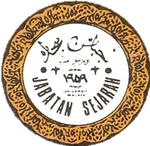The Historical Role of the National Museum of China: Reform and Opening-Up (1978-1997)
DOI:
https://doi.org/10.22452/sejarah.vol32no2.10Keywords:
National Museum, Reform and opening-up, Integration, Circulation, Exhibition ExcellenceAbstract
Reform and opening-up is an essential part of the history of China in the post-Mao era, and its essence is a historical movement of consciously and actively merging Chinese civilisation with the currents of world history. The National Museum of China created the necessary cultural environment and conditions to promote China's Reform and opening-up (1978-1997). With the implementation and deepening of China's Reform and opening-up policy, the restoration and development of display art in the National Museum of China led to a second surge in the construction and development of local and private museums in China. They contributed to effectively circling the internal cultural environment of China's Reform and opening-up. Secondly, the National Museum of China went abroad to conduct foreign exhibitions, deepening the sense of identity in the field of Chinese history and culture, and to a certain extent opening up the external environment for the implementation of Reform and opening-up. This study uses qualitative research and documentary analysis to elucidate the context and background of the Chinese government's Reform and opening-up policy, and to analyse how the National Museum of China (1978-1997) built a bridge to Reform and opening-up. The study is supported by field visits to museum exhibitions, with the aim of filling in the gaps in the historical role of the National Museum of China in promoting China's Reform and opening-up (1978-1997).
Received: 16 June 2023
Reviewed: 21 June 2023
Accepted: 31 August 2023


